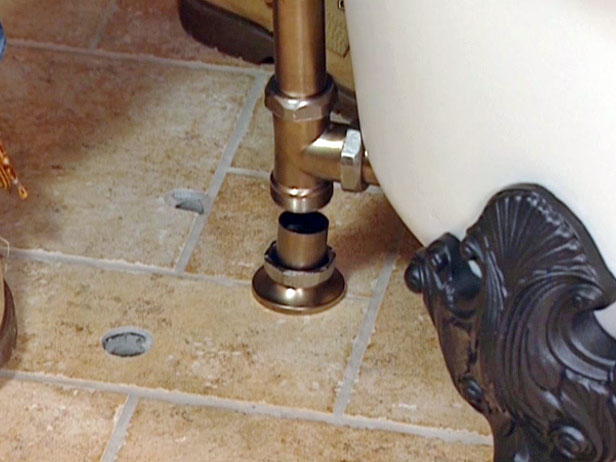
- Tub overflow drain installation how to#
- Tub overflow drain installation install#
- Tub overflow drain installation code#
You can attach it by using the adjustable wrench. These 2 parts must be attached to the drain pipe that is protruding out from the floor. Step 8 - Attaching Overflow Assembly and Drain Look under the tub and attach the tee to the drain and the overflow pipe using a wrench. To remove the old putty, you can use thinner, or you can scrape it carefully with a utility knife.
Tub overflow drain installation install#
It also makes it harder to install new nuts or pipes into the bath tub. There are many times when the putty is very hard, causing problems when trying to remove pipes or nuts. Step 4 - Removing the Overflow PipeĪ tee is used to connect an elbow to the rest of the drain. The overflow plate inside the tub is attached to the pipes on the back of the clawfoot bath tub. This plate is attached with screws or nuts. Remove the pipes that connect your bathtub to the floor. Remove the pipes from the nut connections. In order to disconnect the water supply from the clawfoot bathtub, you will need the help of an adjustable wrench. Are you concerned about a bathtub overflow leaking through the ceiling? As long as your plumbing system works properly, such leaks are improbable to happen.Step 2 - Disconnect the Tub From the Water Supply
Tub overflow drain installation code#
Bathtub overflow drains are required by the plumbing code and are essential to minimize the damage if you accidentally forget the faucet on. No, you cannot remove the bathtub overflow drain. Can you remove the bathtub overflow drain? The bag will prevent water from soaking into the cloth and eventually leaking into the drain. If you decide to use a washcloth, place it in a plastic bag and then stuff it in the hole.

Use a rubber plug that is slightly larger than the overflow drain hole to ensure a perfect seal. To do this, you have to remove the standard drain hole cover first. You can plug an overflow drain with a rubber plug or a washcloth. These include sealing the overflow drain with waterproof tape before filling the tub, filling the drain cover’s holes with flex sealant or waterproof sealant, or plugging the overflow drain hole with a rubber plug or washcloth placed in a plastic bag to prevent it from soaking.
Tub overflow drain installation how to#
Frequent Questions How to block overflow drain in tub DIY?ĭon’t want to replace the original overflow cover and didn’t find a rubber stopper at your home improvement store? There are a few DIY overflow drain cover alternatives you could use if you don’t feel like going to the shops. However, if the water level has dropped, you may want to remove the cover and reinstall it, as it may lack proper sealing. If the closing cover works properly, you should find the tub filled to the brim when walking in the bathroom. Wait for about 15 to 30 minutes and check the water level in the tub. To install a closing overflow cover or plate, you must remove the original cover first. Sink supply line (height): Two holes vertically, both are about 2 to 3 inches above the drain pipe. Most manufacturers cover the bath overflow drain holes with plates that have one or more openings, but that increases the tub’s aesthetic appeal. Bathroom Sink Rough-In Plumbing Dimensions. Remove Your Tub’s Standard Overflow Cover It is permanently installed on your tub, and it is a good choice if you’re sure you’ll never have to use the overflow drain. You must fix it in place of the standard cover, and can turn it one way to close it (and allow the tub to fill to the brim) and the other way to open it (allowing the water to drain).Īn overflow plate also replaces the standard hole cover, but it has no openings.

This cover type is more similar to a bottom drain stopper. If you need to use the overflow drain, simply pull it off – this cover doesn’t require a semi-permanent or permanent installation.Ī closing cover replaces the standard strainer-type hole cover that comes with your tub. Acting as a bath overflow hole stopper, this cover type goes over the existing bath overflow drain cover and attaches to the tub wall with suction cups. From all options above, a rubber (or silicone) cover is the cheapest.


 0 kommentar(er)
0 kommentar(er)
